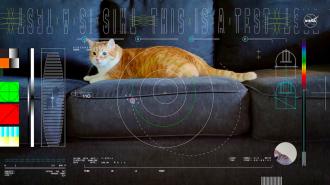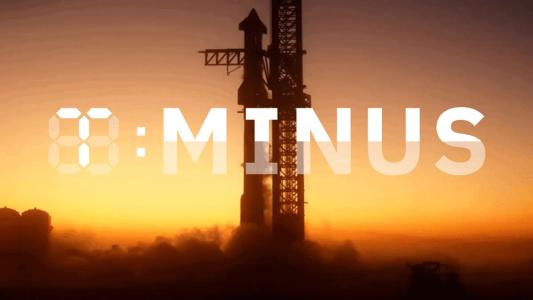For the first time, NASA has used lasers to send data from deep space to Earth — and the data for the history-making demonstration was a cat video.
Deep space communication: Sending data from spacecraft to Earth or vice versa using radio signals can take a long time — NASA sometimes waits several hours for a single high-resolution photo from a Mars rover to fully arrive.
That not only limits the amount of data our spacecraft can send us, it could also be dangerous when we start sending people to Mars and beyond. If something goes wrong, they might need to send a video or lots of other data to Earth and have it arrive rapidly.
“It was able to send the video faster than most broadband internet connections.”
Ryan Rogalin
The idea: NASA believes that optical communication systems, which send information over invisible laser beams, could dramatically improve communication with spacecraft or astronauts in deep space, which is generally defined as anything farther away than the moon.
“The signals travel at the speed of light, so they come just as fast as they do for the microwaves, but you could send more data in the same time of a pass for the same spacecraft resources,” said Bill Klipstein, a principal member of technical staff at NASA’s Jet Propulsion Laboratory (JPL) in Pasadena, CA.
NASA had never tested such a system before, though — the farthest it had sent messages over lasers was about 240,000 miles with the Lunar Laser Communications Demonstration (LLCD) experiment in 2013/2014.
What’s new? To test the potential of optical systems to revolutionize deep space communication, NASA incorporated the Deep Space Optical Communications (DSOC) experiment into Psyche, a mission to study a distant metal asteroid up close.
Before launching Psyche, NASA equipped the spacecraft with an instrument called a “flight laser transceiver” — this device is expected to be capable of transmitting data from deep space at rates 10 to 100 times greater than would be possible using radio.
On December 11, when Psyche was 19 million miles from Earth, NASA instructed the instrument to begin beaming a 15-second high-def video, loaded prior to launch, back to Caltech’s Palomar Observatory — and the process took just 101 seconds.
“Despite transmitting from millions of miles away, it was able to send the video faster than most broadband internet connections,” said Ryan Rogalin, the project’s receiver electronics lead at JPL.
“In fact, after receiving the video at Palomar, it was sent to JPL over the internet, and that connection was slower than the signal coming from deep space,” continued Rogalin.
Famous feline: The contents of the video didn’t matter for the experiment, so the team decided to have a little fun, using a cat video featuring JPL employee Joby Harris’ pet “Taters” chasing a laser pointer, along with graphics related to the Psyche mission.
“Nothing on Psyche generates video data, so we usually send packets of randomly generated test data,” said Klipstein, the demo’s project manager. “But to make this significant event more memorable, we decided to work with designers at JPL to create a fun video, which captures the essence of the demo as part of the Psyche mission.”
Looking ahead: NASA plans to make contact with the flight laser transceiver on Psyche at least once a week for a total of two years of demonstrations (there will be a hiatus between July 2024 and January 2025, as Psyche will be too far away).
The most distant transmissions are expected to occur when Psyche is about 240 million miles from Earth, performing a gravity-assist near Mars.
“The biggest thing now is to show the reliability and the robustness,” Malcolm Wright, flight laser lead at JPL, told the Washington Post. “So it’s not just a novelty, a one-off, but it can be a workhorse. We want to show the capability.”
Update, 01/08/24, 5:15 pm ET: This article was updated to correct the farthest NASA had tested laser communications before the DSOC experiment.
We’d love to hear from you! If you have a comment about this article or if you have a tip for a future Freethink story, please email us at [email protected].






